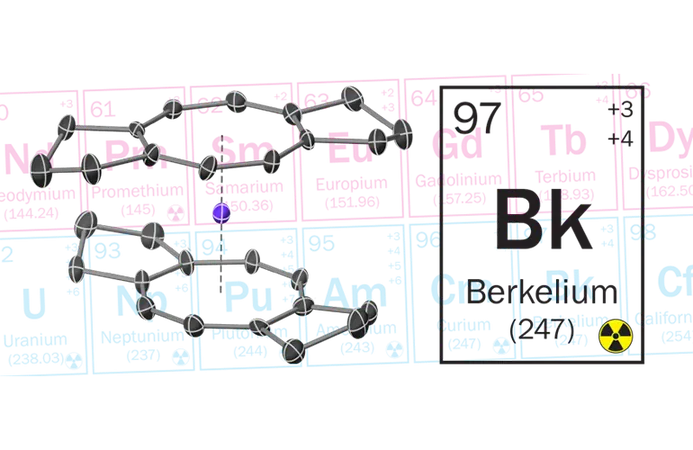
Scientists Unveil Groundbreaking Berkelium Molecule: A Game Changer for Nuclear Chemistry!
2025-09-09
Author: Arjun
A Historic Scientific Breakthrough
In a stunning achievement, researchers at the Lawrence Berkeley National Laboratory have successfully synthesized the first-ever berkelium-containing molecule, dubbed "berkelocene." This innovative molecule features a carbon bound to the rare element berkelium-249, nestled snugly between two cyclooctatetraene-based ligands.
Unexpected Findings on Berkelium's Valence State
What’s particularly surprising? Unlike previous models that suggested a behavior similar to terbium, berkelium in this molecule is found to be tetravalent (Bk⁴⁺). This means it carries a more positive charge than scientists anticipated, resulting in an unusual bonding arrangement with carbon rings.
How the Breakthrough Was Achieved
The team had a mere 0.3 mg of berkelium sourced from the Oak Ridge National Laboratory's National Isotope Development Center. Conducting their experiments in specialized air-free, radiological labs, the researchers confirmed the creation of this symmetric “sandwich” structure using single-crystal X-ray diffraction and resources from the Advanced Light Source.
Implications for Nuclear Chemistry and Beyond
Advanced computational analysis from the University at Buffalo, combined with spectroscopy, revealed that the bonding and charge distribution of Bk–C differ significantly from traditional lanthanide models. This breakthrough not only challenges decades-long theories regarding actinide chemistry—especially for transplutonium elements like berkelium—but also holds promise for enhancing strategies in nuclear waste management and remediation.
A New Era for Actinide Research?
This groundbreaking discovery opens new avenues for understanding the behavior of actinides, and its implications could spur advances in nuclear science, potentially improving safety and effectiveness in dealing with the challenges of long-term nuclear waste.
Stay tuned as we follow this exciting journey that promises to reshape our understanding of atomic science!



 Brasil (PT)
Brasil (PT)
 Canada (EN)
Canada (EN)
 Chile (ES)
Chile (ES)
 Česko (CS)
Česko (CS)
 대한민국 (KO)
대한민국 (KO)
 España (ES)
España (ES)
 France (FR)
France (FR)
 Hong Kong (EN)
Hong Kong (EN)
 Italia (IT)
Italia (IT)
 日本 (JA)
日本 (JA)
 Magyarország (HU)
Magyarország (HU)
 Norge (NO)
Norge (NO)
 Polska (PL)
Polska (PL)
 Schweiz (DE)
Schweiz (DE)
 Singapore (EN)
Singapore (EN)
 Sverige (SV)
Sverige (SV)
 Suomi (FI)
Suomi (FI)
 Türkiye (TR)
Türkiye (TR)
 الإمارات العربية المتحدة (AR)
الإمارات العربية المتحدة (AR)